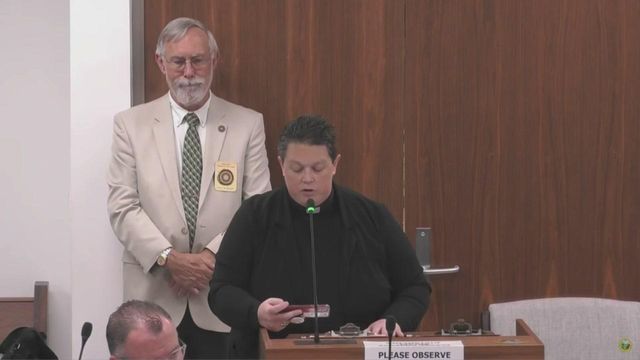Increasing Exposure for Native Artists

PENDLETON, Ore. — In the foothills of the Blue Mountains in Eastern Oregon, a short drive from the rodeo town of Pendleton and about 200 miles east of Portland, is the only professional print house on an Indian reservation in the United States.
The Crow’s Shadow Institute of the Arts, known as CSIA, is a nonprofit on the Confederated Tribes of the Umatilla Indian Reservation and has become a hub for contemporary Native American artists nationwide.
For more than 25 years, some of the biggest indigenous names in contemporary art — Rick Bartow, Marie Watt, Jeffrey Gibson, Kay WalkingStick, Wendy Red Star — have flocked to its printmaking residency program, housed in the ground floor of an old Catholic mission schoolhouse.
“The fact that it exists in this rural indigenous community is sort of extraordinary and part of its magic,” said Watt, a member of the Seneca Nation, who has attended the residency five times since 2002. “Conversations by artists are important everywhere, and they’re happening in rural areas, too. It shifts the paradigm.”
The conversations include breaking down stereotypes about indigenous art, especially the notion that it’s less art than artifact. Many prints made at Crow’s Shadow now hang in the collections of the Whitney, the Library of Congress, the Museum of Fine Arts in Boston and the Portland Art Museum.
In 2010, the Hallie Ford Museum of Art in Salem, Oregon, became the conservator of the institute’s print archive. Last year, Crow’s Shadow received its first grant from the National Endowment for the Arts, providing $35,000 in matching funds for three residencies in 2019.
This year’s residents include Raven Chacon, Yatika Fields, Yoshihiro Kitai, Yoonhee Choi and Natalie Ball. In the coming years, the institute plans to expand its space to accommodate the growing residency program, as well as its traditional arts workshops that serve the reservation and local community.
“Crow’s Shadow is based on what artists need,” James Lavadour, a founder of the institute, said. Lavadour, 68, a renowned expressionist landscape painter and member of the Walla Walla tribe, grew up on the reservation. “Artists need money, space to work, technology, networking, access to collections and education.”
These needs are directly related to Lavadour’s own experience as a self-taught artist in rural America. He said he was clueless in the 70s and 80s about how the art world operated, but was fortunate to be mentored by Betty Feves, a ceramic artist whose husband was the reservation’s doctor. Without her mentorship, he may never have gained access to some of the top contemporary galleries in the Pacific Northwest, he said.
“I wanted to institutionalize the help Betty gave me,” Lavadour said.
He started CSIA with the artist and scholar Phillip Cash Cash in 1992 with the mission of fostering the development of emerging and established Native American artists through educational, social and economic opportunities.
Crow’s Shadow hosts about three to seven artists a year for two weeks each. Inside the Spanish Colonial-style schoolhouse, past a gallery featuring prints from the likes of Bartow, Avantika Bawa (who did the residency in 2018), and Edgar Heap of Birds, is a bedroom for the artist, decorated with textiles from the nearby Pendleton Woolen Mills.
The bedroom opens into a studio packed with four massive presses (two for lithography and two for etching), papers, inks and printing stones, all lit by a wall of windows.
Artists work closely with a master printer, which was Frank Janzen until his retirement in 2017; Judith Baumann now fills the role. Both Janzen and Baumann trained at the Tamarind Institute, a leader in fine art lithography and a model for CSIA.
The artist and master printer produce an edition of about 20 prints. The artist, master printer, CSIA, and the Hallie Ford museum each get a print, and Crow’s Shadow promotes and sells the remainder to fund the program and pay the artist. The plates or stones are destroyed to ensure the value of a limited edition.
Lavadour chose printmaking as the focus of CSIA after doing a Rutgers printmaking fellowship with master printer Eileen Foti.
“The outcome was this formal edition, which was easily absorbed into museum collections,” he said. Printmaking “had the potential of creating access for artists that didn’t have any access to that kind of world. It seemed, in a lot of ways, to short-circuit traditional art development for independent artists.”
Prints run the gamut from abstract to figurative, minimalist to maximalist.
Red Star, an Apsaalooke (Crow) artist who has done the residency twice, said the institute dismantles the “othering” of Native art. “They have the right mission of really promoting Native artists as contemporary artists and not as this silo.”
Her prints juxtapose the old and new ways of reservation life in a style reminiscent of pop art, both in color and repetition. One of her prints features pickup trucks draped in Pendleton blankets on parade for the annual Crow Fair.
Crow’s Shadow also hosts non-Native artists to foster exchange and educate others about contemporary Native American life. Visiting artists lead community workshops, and Pat Hall Walters, a founding board member who is Umatilla-Walla Walla, gives reservation tours and brings artists to long house feasts and the annual pow wow.
“The whole idea is getting creative people together with creative people. It’s good for everyone,” Lavadour said.
For so long, the institute operated on a shoestring, he said. But because of its growing archive and reputation, grant funding has increased. Before Bartow died in 2016, he donated all his prints back to Crow’s Shadow. In selling these, they have created the Rick Bartow Memorial Endowment Fund.
With this newfound stability, the institute is planning to move to a larger space, perhaps even build a new center, but it will never leave the reservation.
“Morally, this organization needs to be on the reservation,” Lavadour said. “It needs to be a gift to the world, to artists everywhere, from the indigenous community.”









